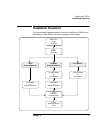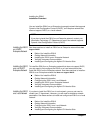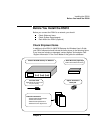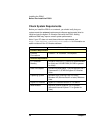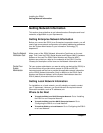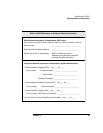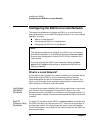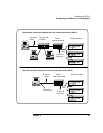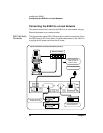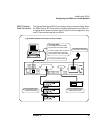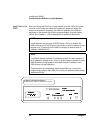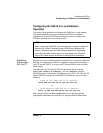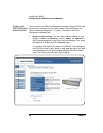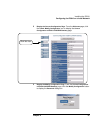
44 Chapter 2
Installing the E5810
Configuring the E5810 on a Local Network
Configuring the E5810 on a Local Network
This step gives guidelines to configure an E5810 on a Local network for
eventual operation in a non-DHCP Enterprise network or in a Local network
operation, including:
What is a Local Network?
Connecting the E5810 to a Local Network
Configuring the E5810 on a Local Network
What is a Local Network?
A local (peer-to-peer) network is a network consisting of a computer with an
Ethernet port and an E5810 or a set of networking devices that are
networked together but are not connected to an Enterprise network. The
figure on the next page shows example configurations for Local networks
with hub/switch or crossover cable connections.
Local Network
(Hub/Switch)
Connections
In a typical Local network (isolated LAN), a hub or switch may or may not act
as a Dynamic Host Configuration Protocol (DHCP) Server. For Local
Network connections, the E5810 is not visible on the Enterprise network. For
this configuration, multiple PCs can communicate with the E5810 via the hub
or switch.
Direct PC
(Crossover Cable)
Connections
For direct PC connection to the E5810, a crossover cable is connected from
the E5810 LAN port to a LAN card on the PC. There are no connections to
an Enterprise network. This setup is typically used for local configuration.
For this configuration, only a single PC can communicate with the E5810 via
the crossover cable.
NOTE
This step gives guidelines to configure your E5810 on a Local network
for eventual installation on an Enterprise network that
does not support
Dynamic Host Configuration Protocol (DHCP) OR for installation on a
Local network.
If you plan to install the E5810 on an Enterprise network that
does
support
DHCP, skip this step and go to “Installing the E5810 on an
Enterprise Network”.




